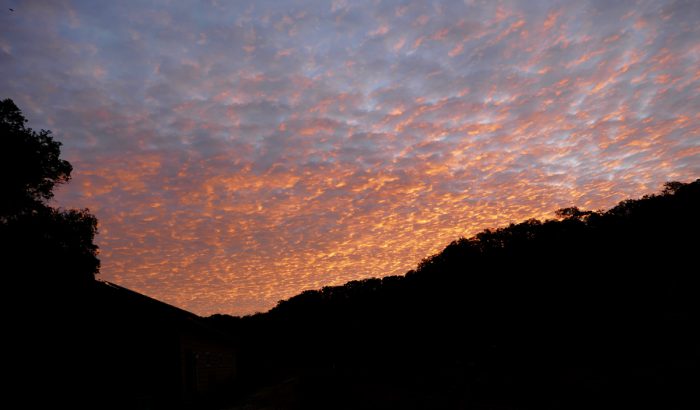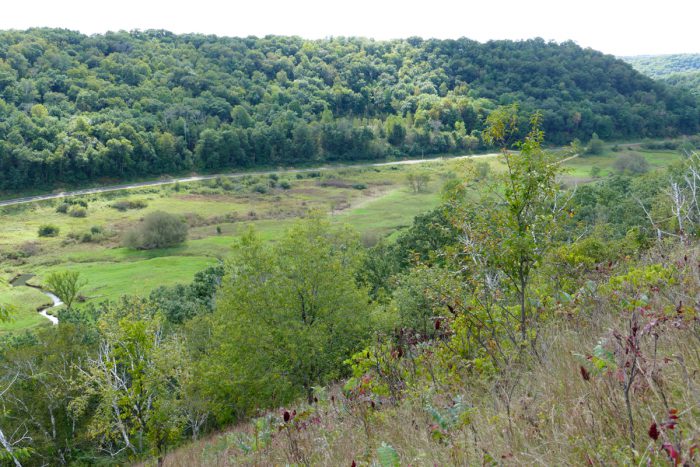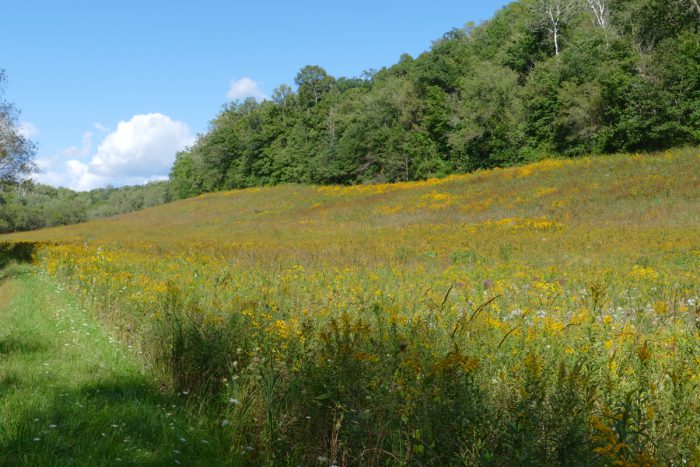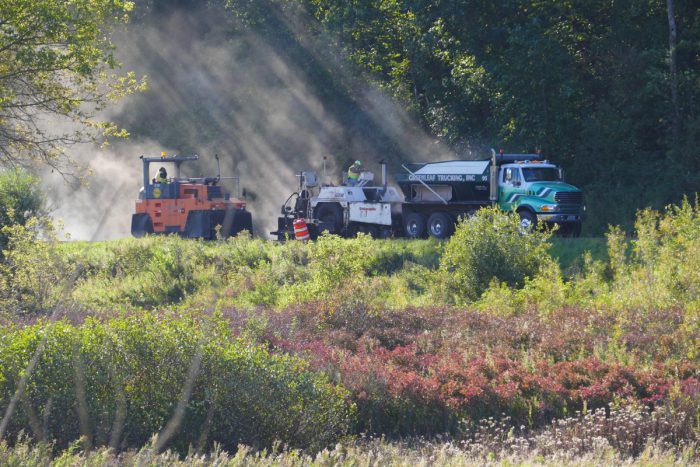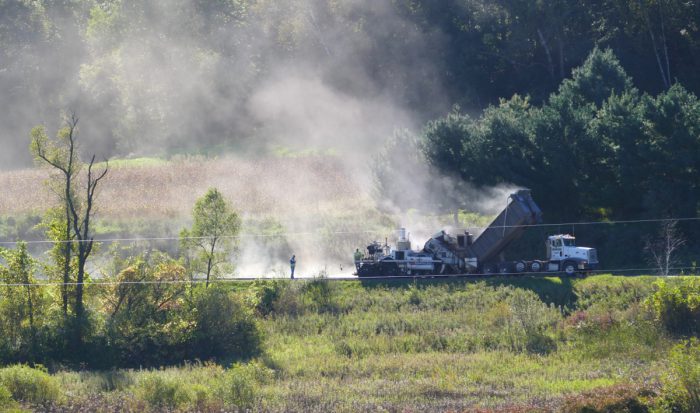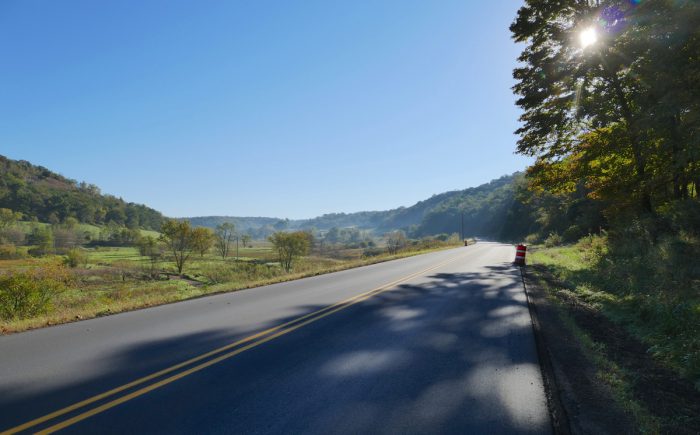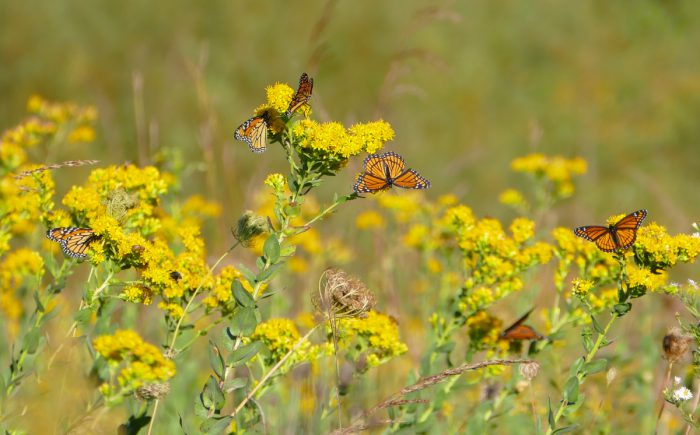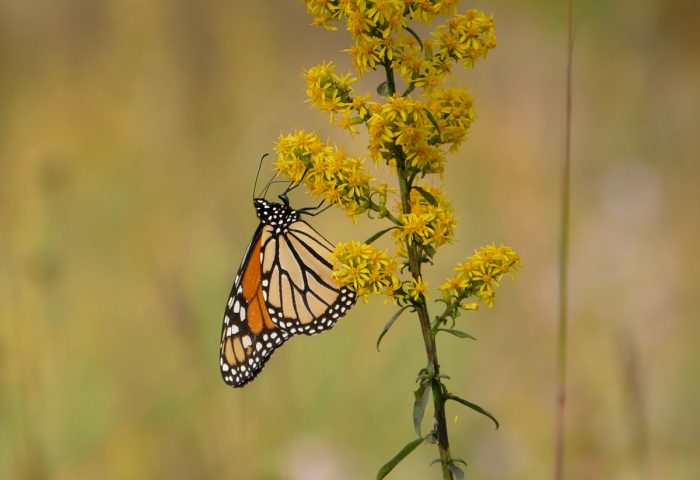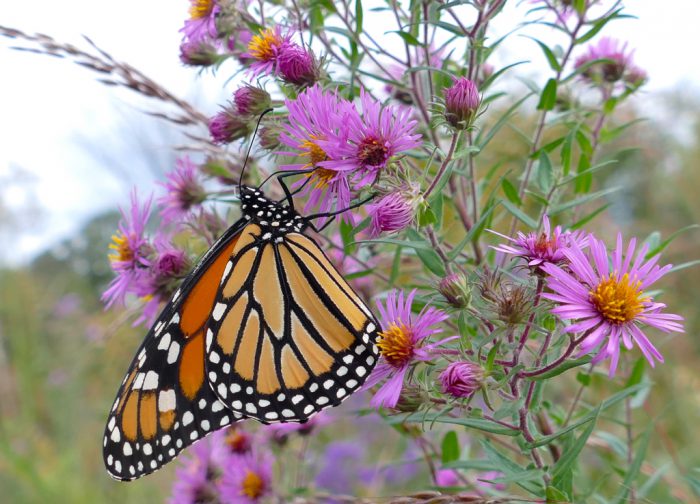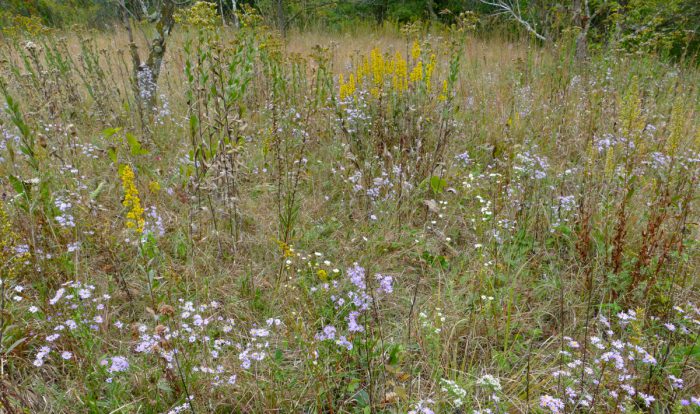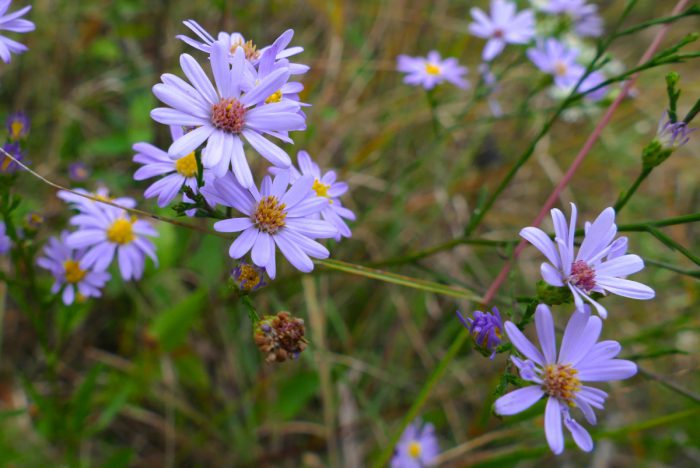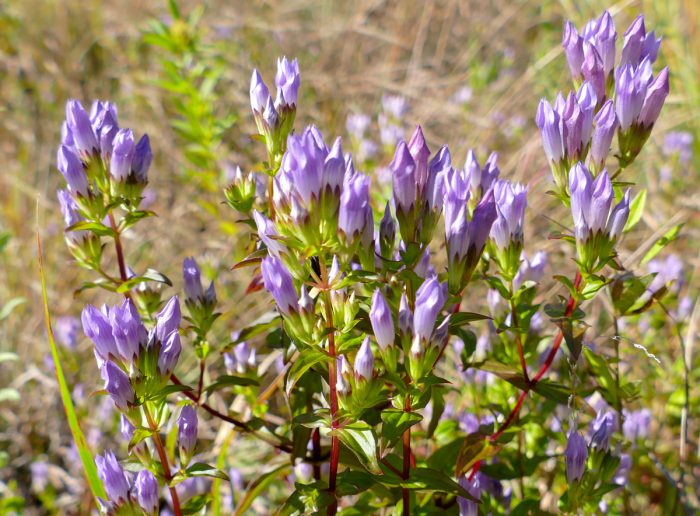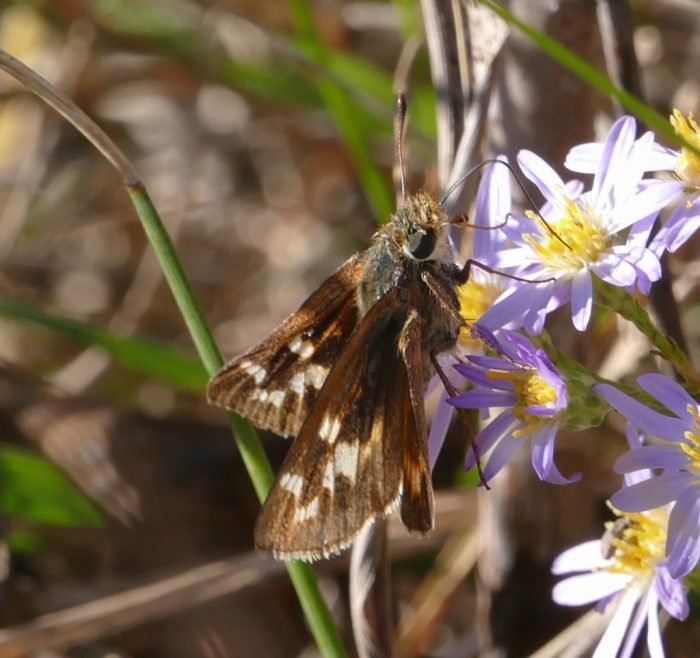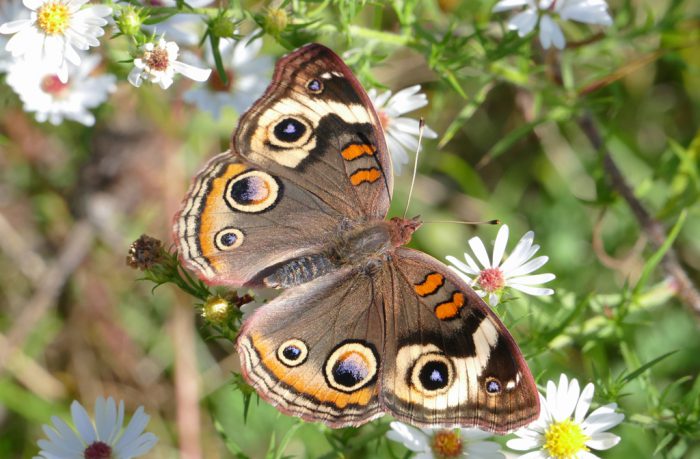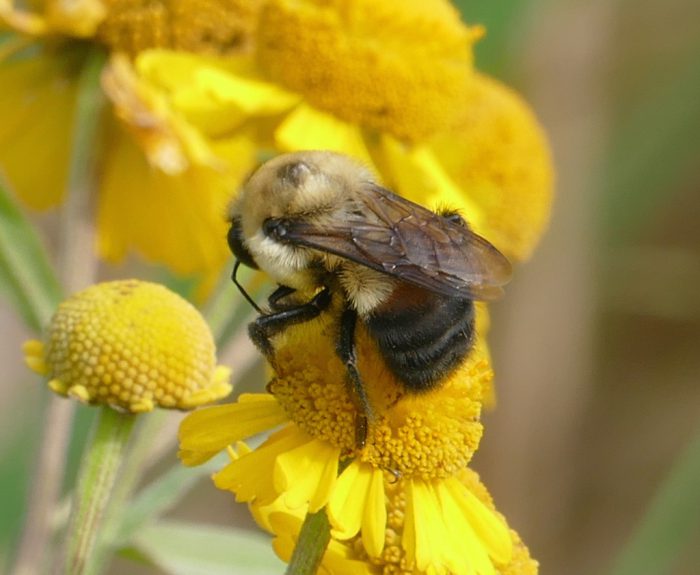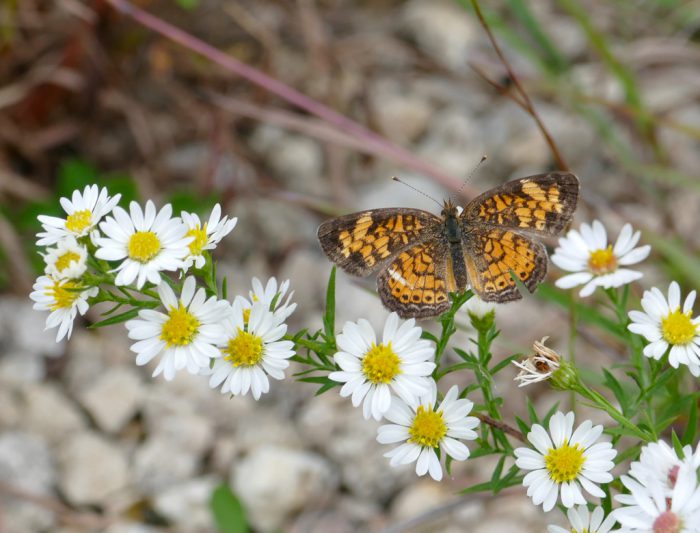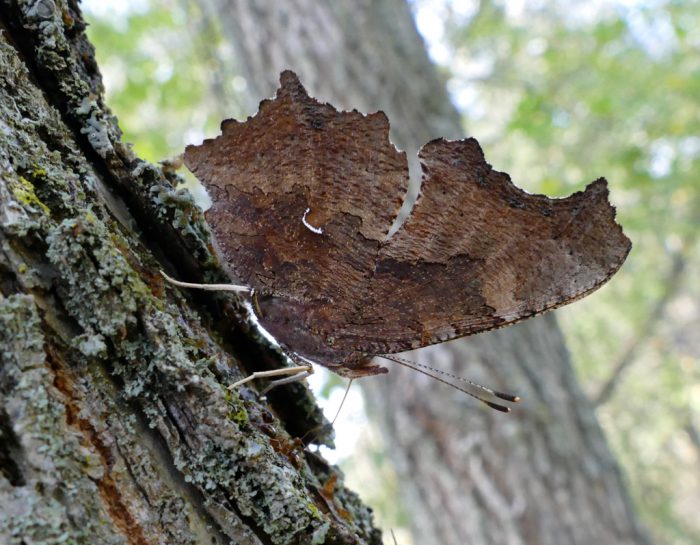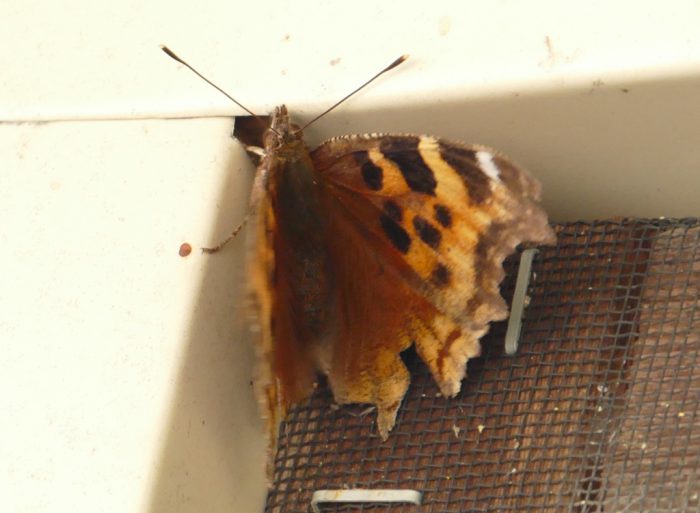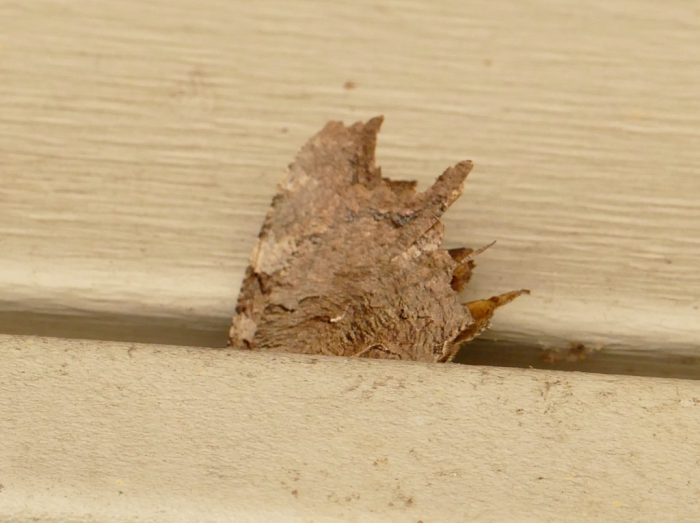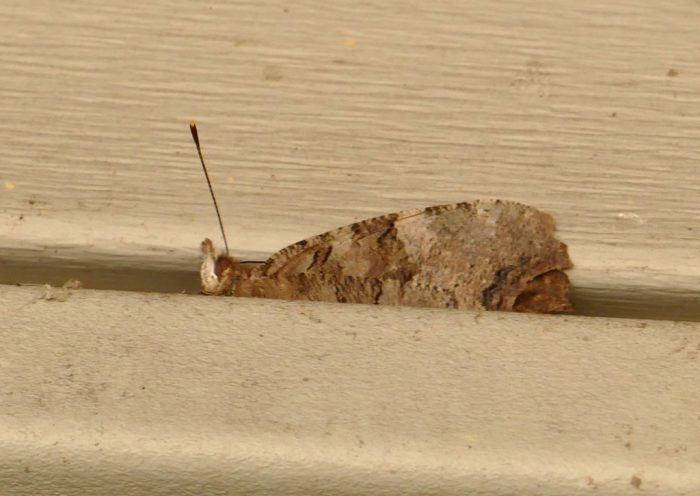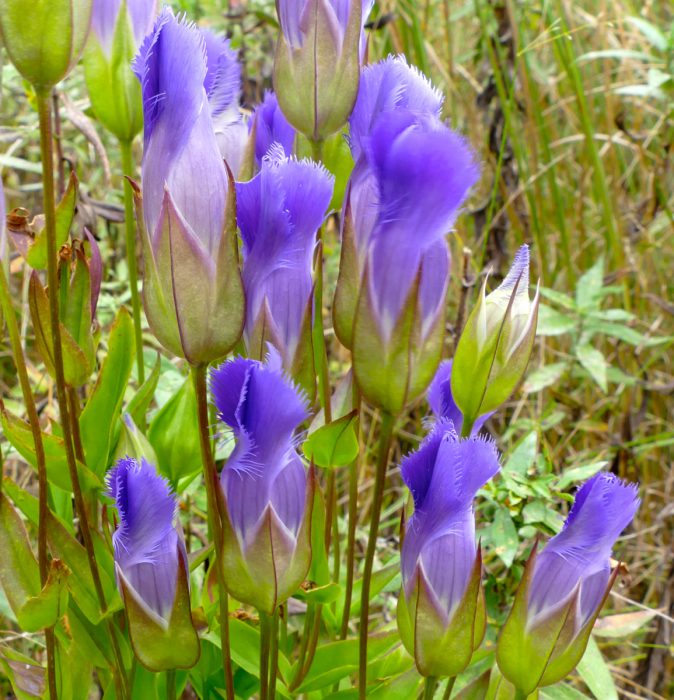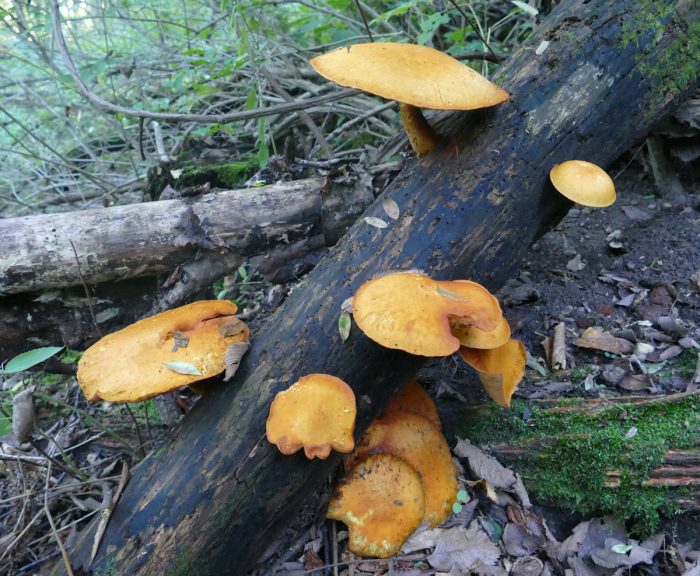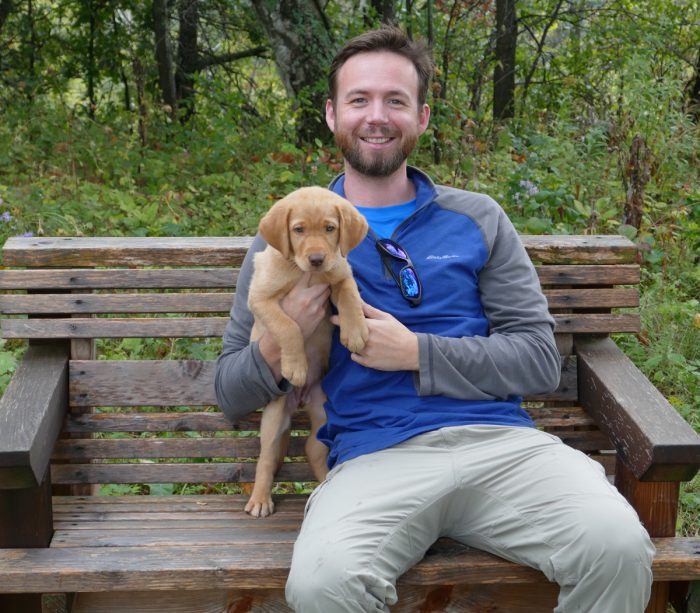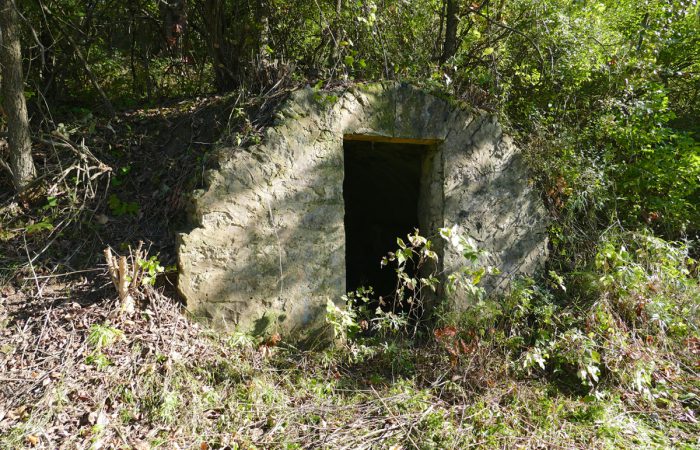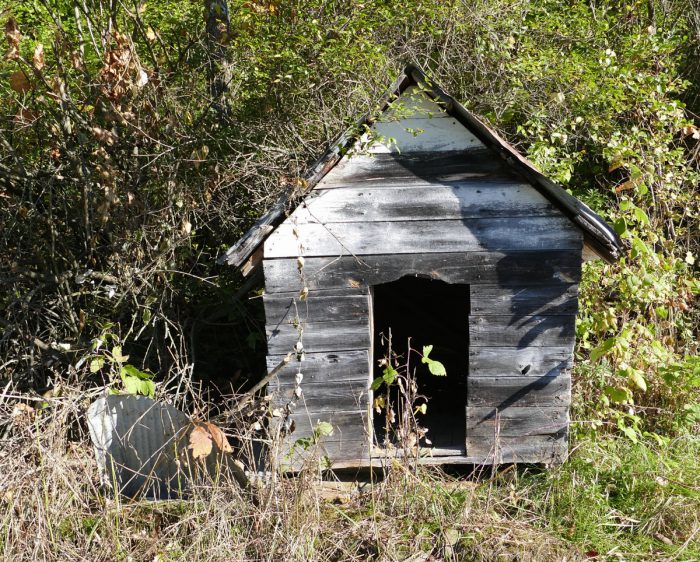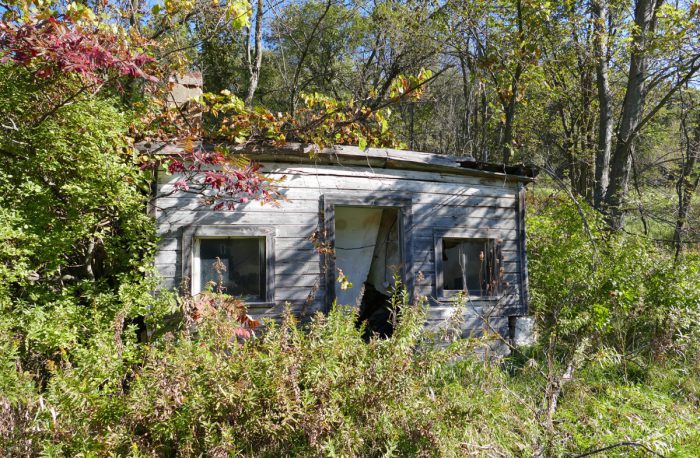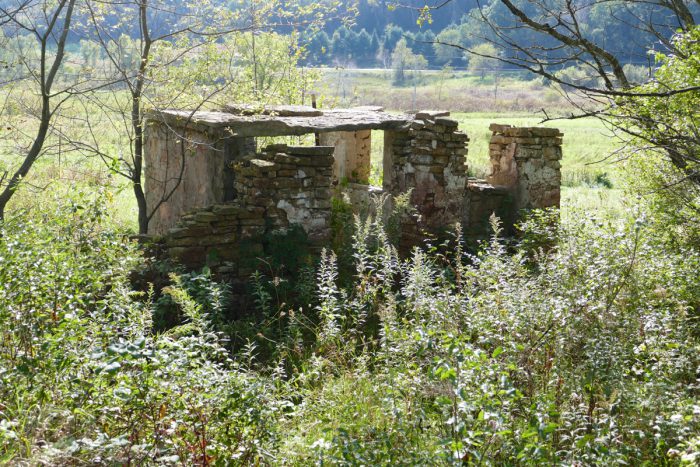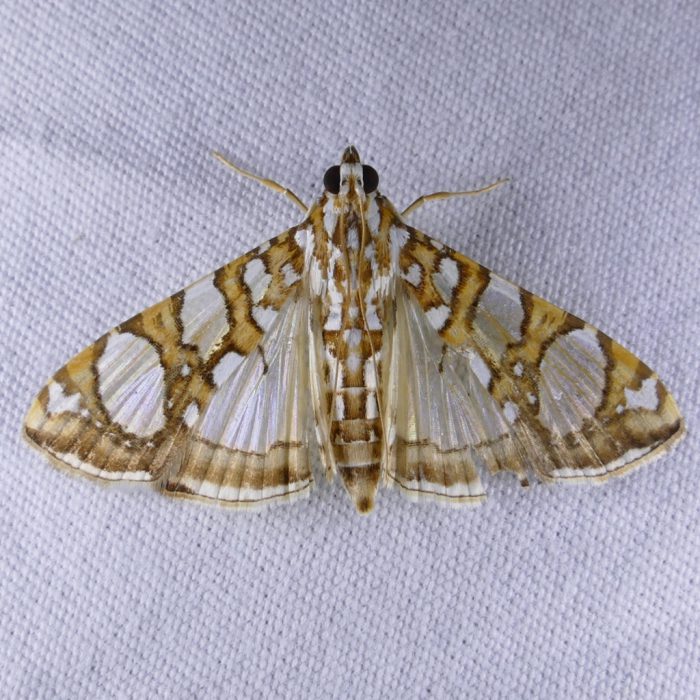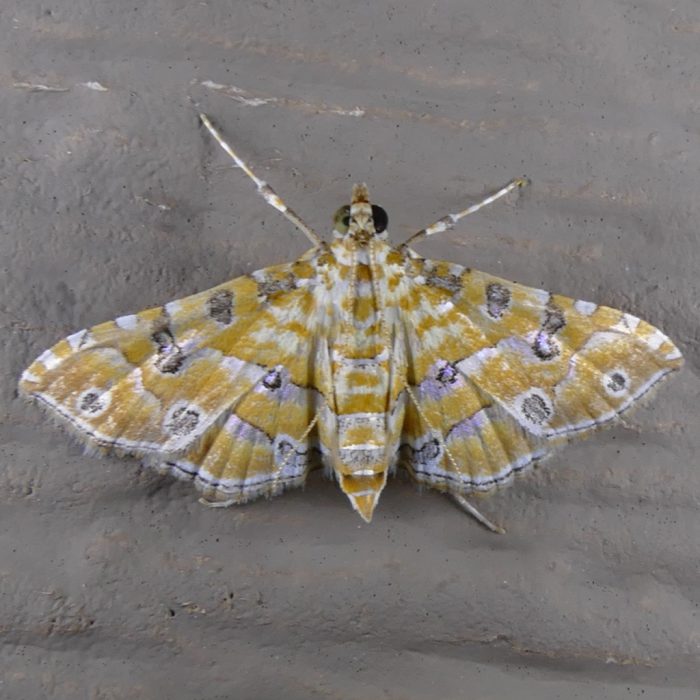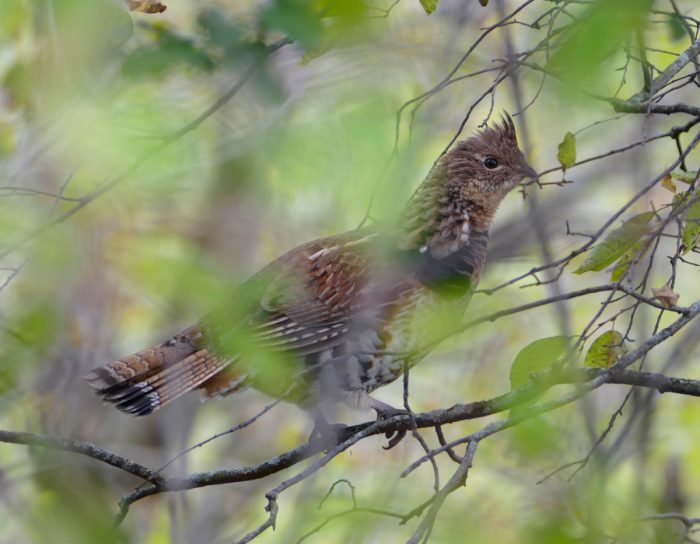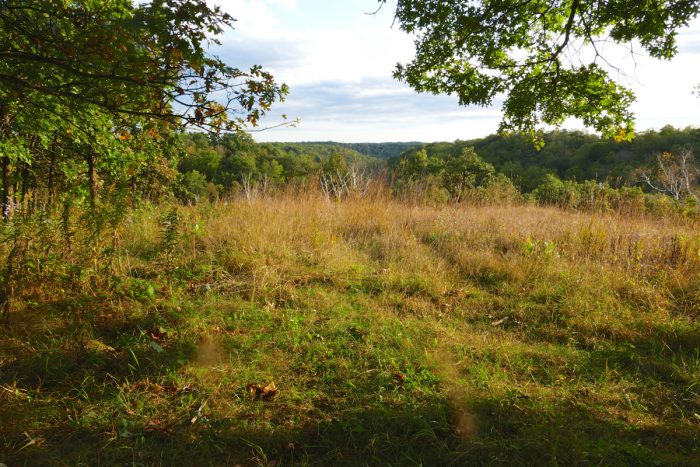Now that the days are days are shorter, we’re seeing more sunrises.
The prairies are changing to their fall colors, but the trees are still green. Looking from Sumac Prairie, down on the wetland, the brightest green is where the flood went through.
East Center Valley Prairie – with big patches of Brown-eyed Susan still in bloom.
One of the exciting things that’s been happening is that our road is getting repaved. The patching has been getting more extensive every year – patches on top of patches on top of patches. Finally, last week, they scraped the whole top off, and put on a new surface.
And here it is – smooth, and finished except for the edges.
We were very encouraged by the number of Monarchs we saw migrating through this year. It’s been a tough year for them – a snow and ice storm hit their overwintering areas in Mexico just as they were starting to migrate north. But we’ve been watching their numbers increase over the summer, and at the peak of migration we saw 8 – 10 on every walk.
This photo shows both Monarchs and Viceroys nectaring on Stiff Goldenrod. The two with their wings all the way open are Viceroys. The 3 on the left, with wings closed, are Monarchs.
Monarch on Showy Goldenrod
Monarch on a pink New England Aster
Asters and Showy Goldenrod are blooming in the Knife Edge Prairie.
Sky-blue Aster
Stiff Gentian is blooming on the steep slopes close to the house.
Sachem – a skipper butterfly that’s an uncommon visitor to Wisconsin. (Thanks to Mike Reese for the ID.)
Common Buckeye These butterflies don’t spend the winter here – they fly up from farther south. This has been a good year for them – they’ve been very common all summer.
We don’t see honeybees during most of the year, but in the fall, maybe because they have to travel farther to find flowers, they come to nectar on our asters and goldenrods. This one is on New England Aster.
Brown-belted Bumblebee on Sneezeweed
Northern Crescent on Frost Aster
When I put out sugary bait for moths at night, I find butterflies eating it during the day. This is a Gray Comma sipping some bait.
Several of the butterflies that are flying now spend the winter as adults – Gray and Eastern Commas, Question Marks, and Compton Tortoiseshells. I frequently see Compton Tortoiseshells searching for a crack that they can use for shelter. This one was fluttering around our screened porch, checking out the available cracks.
Exploring a crack.
Checking out the view
My favorite fall flowers are Fringed Gentians. There’s a spot in the wetland where they grow naturally, and I’ve sprinkled seeds in the wet end of one of our planted prairies. This year that prairie has several dozen plants blooming.
It’s also been a good year for mushrooms. These were very big ones – the cap of the largest one was 8 1/2 inches across. They’re called Yellow Gymnopilus. (thanks to Pete Hautman for the ID)
We had the annual inspection of our conservation easement by West Wisconsin Land Trust. This year Andrew Norman and his new puppy, Meadow, came to do it. Meadow really enjoyed the prairie tour.
I finally took some photos of the old buildings near where the farmhouse used to be. The farmhouse burned down years ago, before we came here. But there are still a few outbuildings left.
The smokehouse
Doghouse – I think
Milkhouse – I think
Remains of the old barn
Click Here to see old photos of the farm when these buildings were still in use.
This is the time of year when I sometimes get unusual visitors to my moth lights. These are two moths that are normally only found in the very far south.
Mulberry Leaftier
Ommatospila Moth
Ruffed Grouse
Fall colors on Hidden Oaks Point

